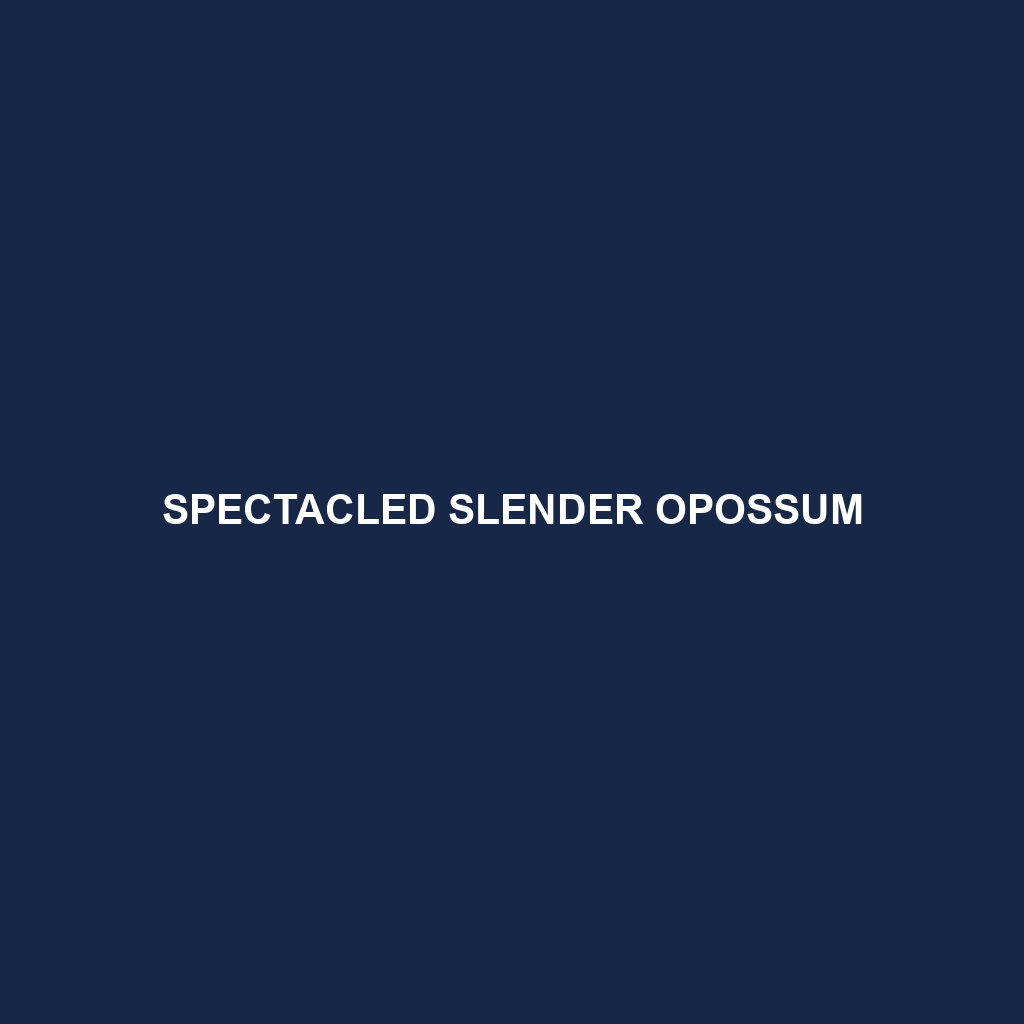Spectacled Slender Opossum: A Comprehensive Overview
The Spectacled Slender Opossum (Lestodelphys halli) is a small, nocturnal marsupial native to South America. Recognizable by its striking facial markings and slender physique, this elusive creature plays a unique role in its ecosystem. Its name derives from the distinctive ring-like patterns around its eyes, resembling spectacles. Adapted to a variety of habitats, the Spectacled Slender Opossum is a fascinating subject for both researchers and wildlife enthusiasts.
Physical Characteristics:
Size: Adult Spectacled Slender Opossums typically measure between 5 to 7 inches (12 to 18 cm) in body length, with an additional tail length of 4 to 6 inches (10 to 15 cm). They weigh around 3 to 5 ounces (85 to 140 grams).
Coloration: Their fur is primarily a soft grayish-brown on the back, with a lighter, almost white underbelly. The most distinctive feature is the dark rings encircling their eyes, giving the appearance of wearing spectacles.
Special Features: They possess a prehensile tail, which aids in climbing and balancing. Their large, prominent eyes are adapted for nocturnal vision, while their sharp claws are perfect for foraging and climbing.
Behavior:
Social Interactions: Spectacled Slender Opossums are generally solitary animals, coming together only for mating. They are known to be territorial and exhibit behaviors to defend their space from intruders.
Feeding Habits: These opossums are omnivores, with a diet consisting of insects, small vertebrates, fruits, and nectar. Their foraging activities occur mostly at night, capitalizing on their excellent night vision.
Ecological Roles: As both predator and prey, they help control insect populations and serve as food for larger predators. Their foraging behavior also aids in seed dispersal, promoting plant growth and diversity in their habitats.
Habitats:
Spectacled Slender Opossums inhabit a range of environments, including tropical rainforests, subtropical forests, and sometimes even temperate woodlands. They show a preference for areas with dense vegetation that provides ample cover and food resources.
Adaptations:
Nocturnal Lifestyle: Adaptations like large eyes and acute hearing make them adept at nighttime activities.
Prehensile Tail: This adaptation enhances their arboreal lifestyle, allowing them to navigate and forage in trees efficiently.
Camouflage: Their coloration helps them blend into the forest floor and foliage, providing protection from predators.
Conservation Status:
Currently, the Spectacled Slender Opossum is not classified as endangered, but habitat destruction and fragmentation pose significant threats. Conservation efforts focus on habitat preservation and environmental education to ensure these unique creatures continue to thrive.
Fun Facts:
The Spectacled Slender Opossum is one of the few marsupials that undergo torpor, a state of reduced metabolic rate, to conserve energy during times of food scarcity.
They have an exceptional sense of smell, which they use to locate food and navigate their environment.
Despite their small size, these opossums are skilled climbers and can be surprisingly agile among the trees.
In , the Spectacled Slender Opossum is a fascinating marsupial with unique adaptations and behaviors that make it an integral part of its ecosystem. Understanding and protecting this species is crucial for maintaining biodiversity and ecological balance.
